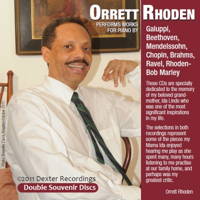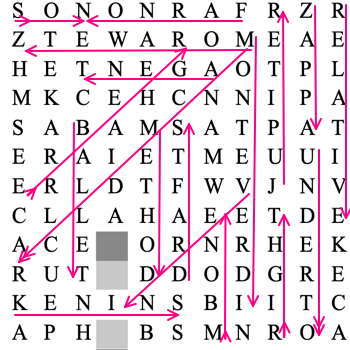- Valery Khalilov
- Sergiu Comissiona
- Raven Wilkinson
- Andrew Porter
- Music and Media Consulting Ltd
- Alfred Schnittke
- Evgeniy Aleksandrovich Shiryaev
- Ysaye
Economical but Effective
GIUSEPPE PENNISI reviews the new production
of Puccini's 'Trittico' in Florence
Staging Il Trittico by Giacomo Puccini is an operation that scares general managers and artistic directors. It entails three distinct operas, each in one act, forty-four characters often sung and acted by about thirty artists. Especially in Florence, where there is still the memory of a splendid production in 1988 with Bruno Bartoletti on the podium and direction of the three works entrusted respectively to Ermanno Olmi (Il Tabarro). Franco Piavoli (Suor Angelica) and Mario Monicelli (Gianni Schicchi). The new production has arrived, so to speak, in stages. It is an idea of the former superintendent Cristiano Chiarot who has the merit of the revival of the Florentine opera house, always keeping an eye on the budgets. The stage direction, sets, costumes and lighting were entrusted to Denis Krief on a very limited budget. This Trittico is in co-production with the Lyric Theatre of Cagliari (where Suor Angelica was seen and heard just over a year ago), and with Teatro del Giglio of Lucca (where Suor Angelica and Gianni Schicchi were performed a few months ago). Suor Angelica and Gianni Schicchi will soon be in Ravenna.
Krief finds an intelligent and economical solution to the production. There is a single basic set. In Il Tabarro, it becomes a barge on the canals of Paris thanks to a giant projection of a postcard of the time.
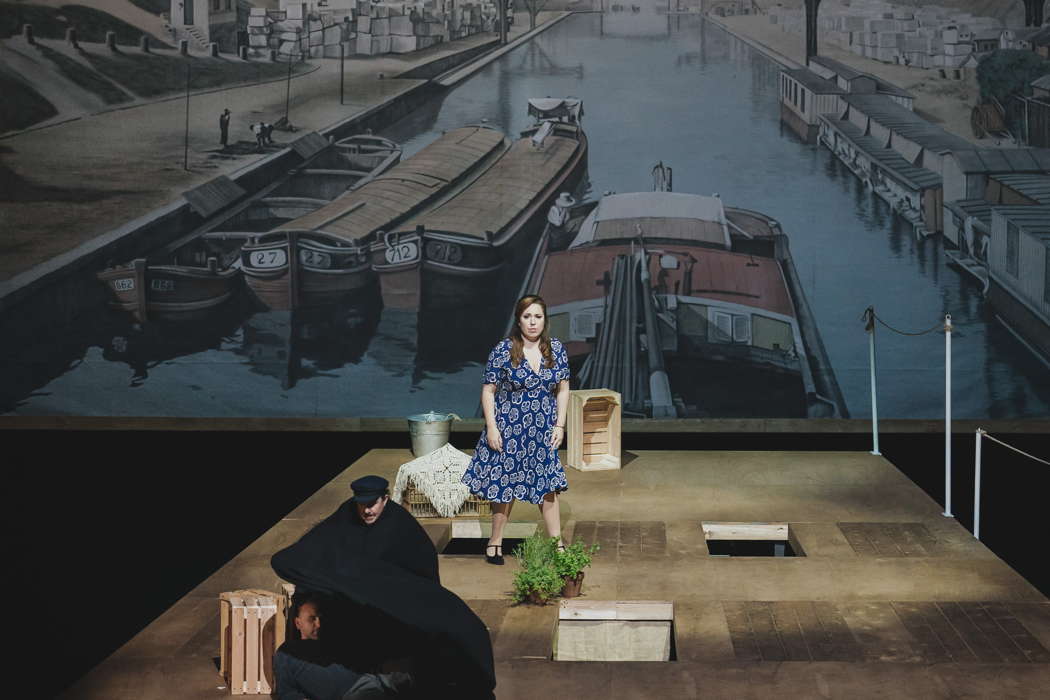
Franco Vassallo as Michele and Maria José Siri and as Giorgetta in Puccini's Il Tabarro in Florence. Photo © 2019 Michele Monasta
In Suor Angelica, it shrinks to give the atmosphere of a convent with a grating that indicates the cloister.
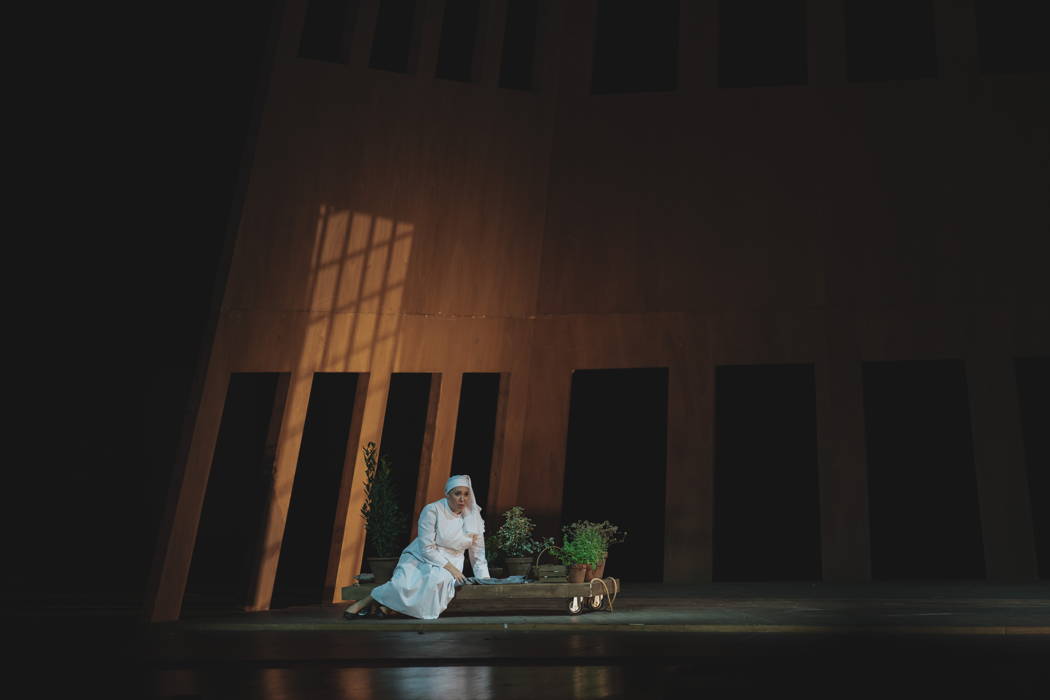
Maria José Siri in the title role of Puccini's Suor Angelica in Florence. Photo © 2019 Michele Monasta
In Gianni Schicchi, it becomes a large house from whose windows you can see glimpses of Florence in gravure colour.
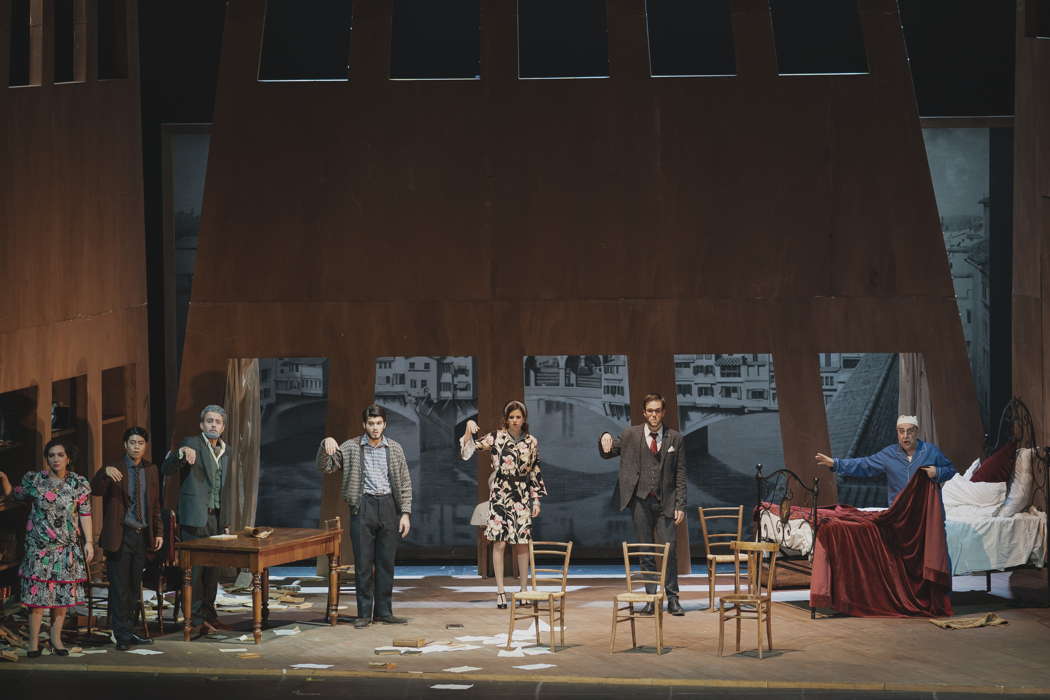
A scene from Puccini's Gianni Schicchi in Florence. Photo © 2019 Michele Monasta
The costumes are vaguely contemporary. The acting is very accurate. In short, it is a production that can be adapted well to various stages.
Before moving on to the musical part, it is useful to remember that Il Trittico was composed during World War I. At Puccini's home, the world war intersected with the family war. The composer, with the support mainly of Giovacchino Forzano - writer, poet, playwright, film director and author of the librettos of Suor Angelica and Gianni Schicchi - and Tito Ricordi, had completed Il Trittico, which he had been working on since 1913, just a few weeks before a major Italian defeat and the yellow fever epidemic. His son Tonio, a conscript, returned home and attempted suicide (also for emotional reasons). His sister Tomaide died of the epidemic. His wife Elvira intercepted the letter from the Swiss consul who, given the situation, withdrew Puccini's visa to access Lugano where he went periodically (and frequently) to visit his lover Sybil Seligman; the affair, therefore, was revealed to the irritated Elvira. Even for these determinants, Krief is right in taking various variations of death as the dominant theme of the three operas that may appear profoundly different from each other. In fact, in Krief's staging, the common thread is death: seen as 'peace' - one of the last lines of Il Tabarro - after a difficult and bloody life, as a 'light' in Suor Angelica and Gianni Schicchi as the destiny of a humanity full of nastiness, intrigues and cheats.
With Italy in chaos, it was difficult to find a theatre to stage Il Trittico; in fact three distinct operas whose production requires, as said, about thirty soloists and a Mahlerian orchestra. The plan was to produce the world premiere at the Royal Opera House (now Teatro dell'Opera) in Rome, but the debut took place on 14 December 1918 at the Metropolitan in New York, without the presence of Puccini – the seas were not safe due to the mines left by the Germans - but with good success.
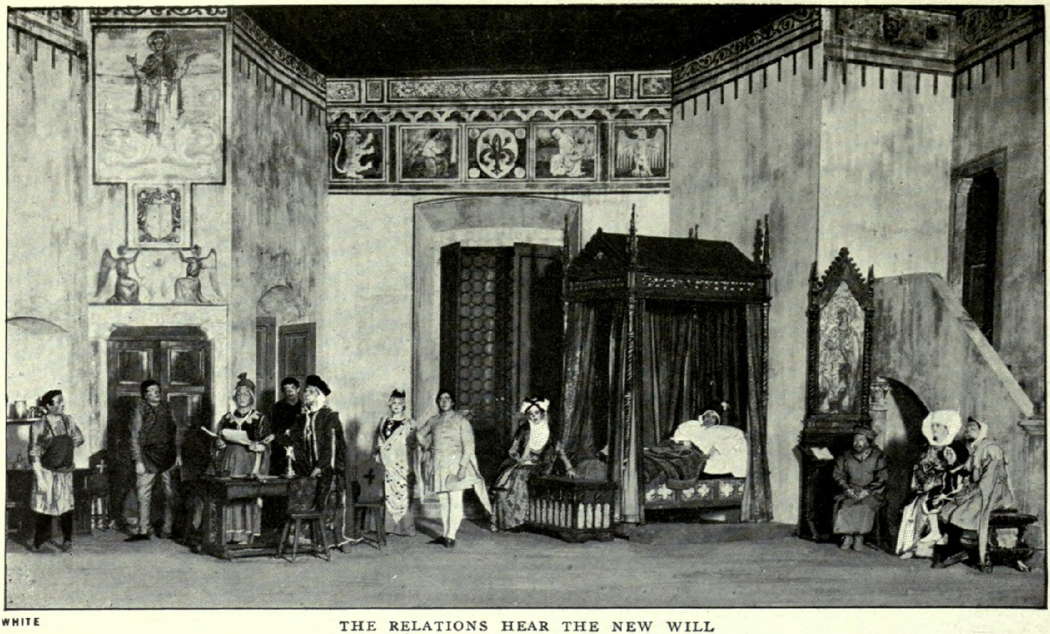
A 1918 photo of the Will Scene from an American production of Puccini's opera Gianni Schicchi, where the Donati relatives listen to the reading of the new will, taken from the 1921 Victrola book of the opera
A triumphant Italian premiere followed in Rome on 11 January 1919, a London premiere on 18 June 1920 (in the presence of King George), a Viennese in October 1920 and in Bologna in 1921. Each time Puccini revised the score that had its final set-up at the premiere at La Scala on 29 January 1922, where the 'flower aria' was introduced, in Suor Angelica; this is a piece with a bold harmonic experimentation, atonal and bordering almost on dodecaphony.
These details may seem trivial, but they are useful to understand both the economical but very effective staging of Krief and the musical choices of Valerio Galli at the helm of that magnificent complex that is the orchestra of the Maggio Musical Fiorentino. The first choice concerns Il Tabarro, usually orchestrated and sung as a verismo opera, almost a late epithet of Cavalleria and Pagliacci. In this production, however, all its expressionist content is extracted from its dissonances to the sung declamation and the counterpoint by madrigal of the first decades of the twentieth century. It confirms that Puccini was culturally linked to German music - a cousin of Schrecker, uncle of Korngold and Zemlinsky. A thousand miles away from the Italian verismo.
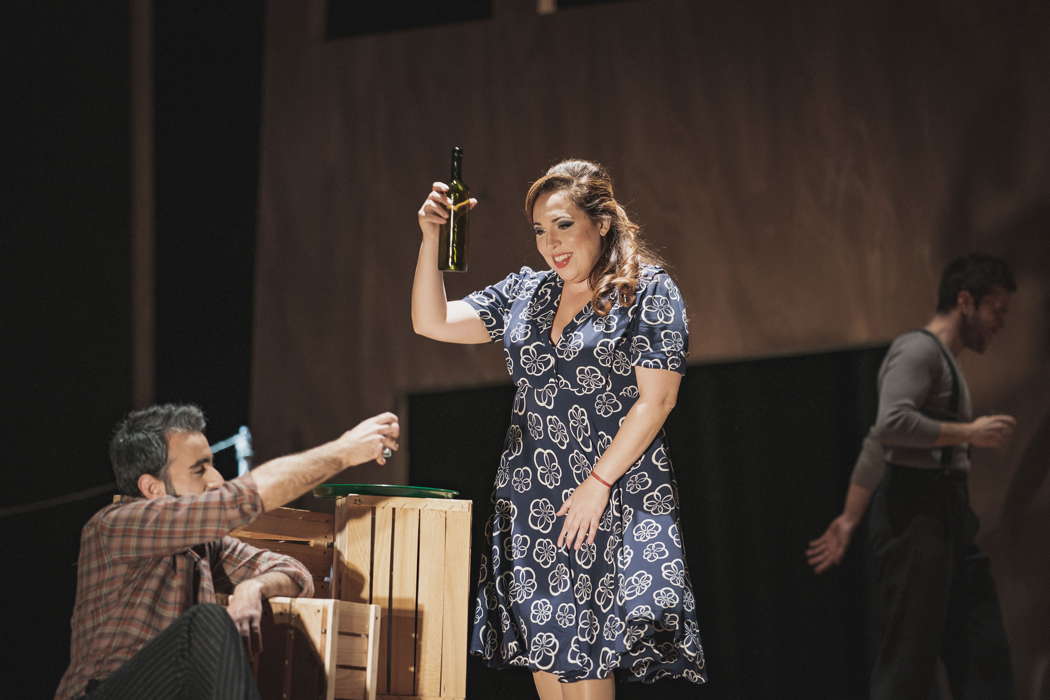
Angelo Villari as Luigi and Maria José Siri as Giorgetta in Puccini's Il Tabarro in Florence. Photo © 2019 Michele Monasta
Also in Suor Angelica the musical direction exalts not only dodecaphony in the 'flower aria' but also the return to polyphony on which the young Malipiero was working in those years.
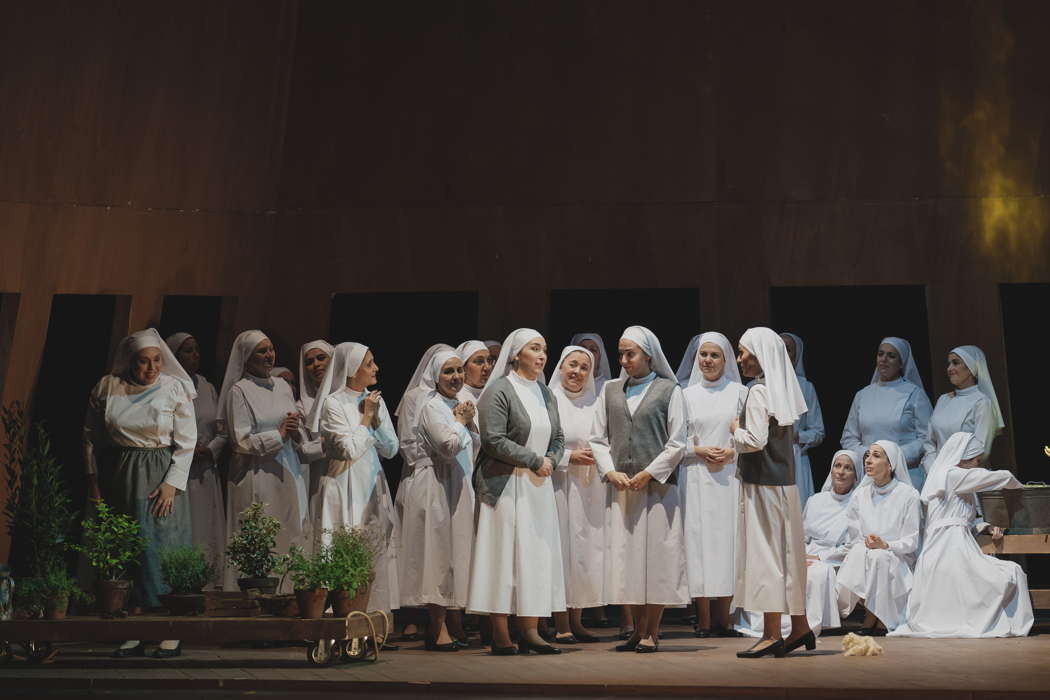
A scene from Puccini's Suor Angelica in Florence. Photo © 2019 Michele Monasta
In Gianni Schicchi the rhythm is sharp rather than comic.
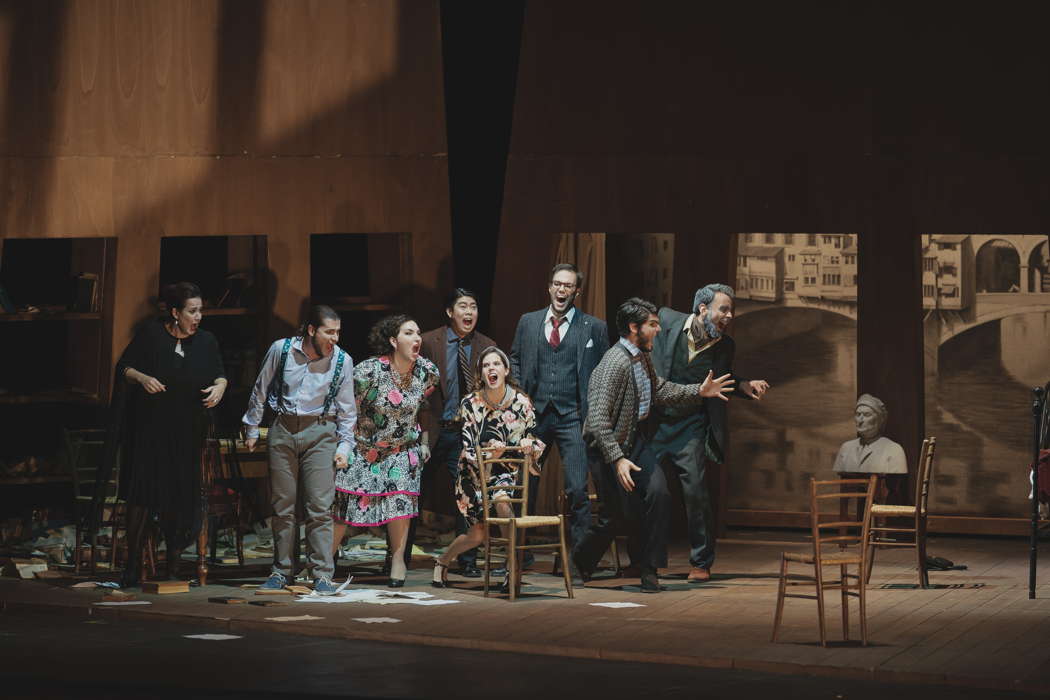
A scene from Puccini's Gianni Schicchi in Florence. Photo © 2019 Michele Monasta
There are too many performers to remember them all. Maria José Siri (in Il Tabarro and Suor Angelica), Anna Maria Chiuri (in all three works), Franco Vassallo (in Il Tabarro), Bruno De Simone (in Gianni Schicchi) and Angelo Villari (in Il Tabarro) all excel. Numerous young people, coming from the Academy of Maggio Fiorentino: outstanding were Francesca Longari's Lauretta in Gianni Schicchi. Dave Monaco was a great 'song seller' in Il Tabarro; in the role of Rinuccio in Gianni Schicchi his voice is well set and plays well, but on 17 November 2019 he had too small a volume.
Copyright © 21 November 2019
Giuseppe Pennisi,
Rome, Italy



